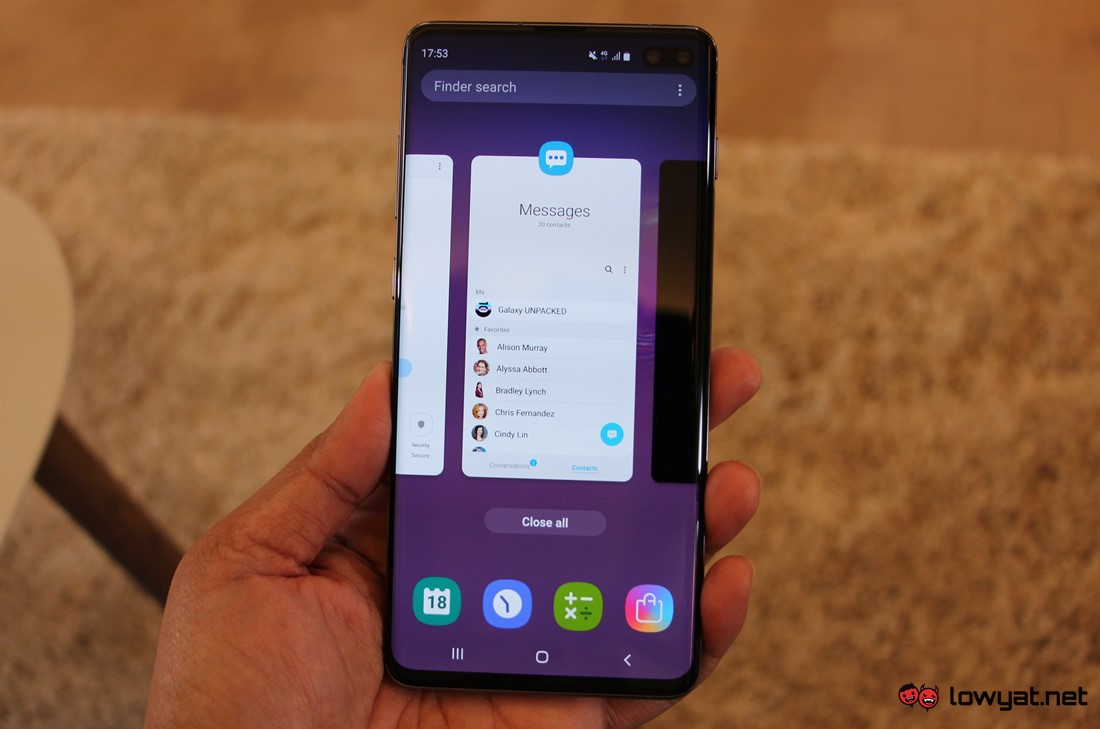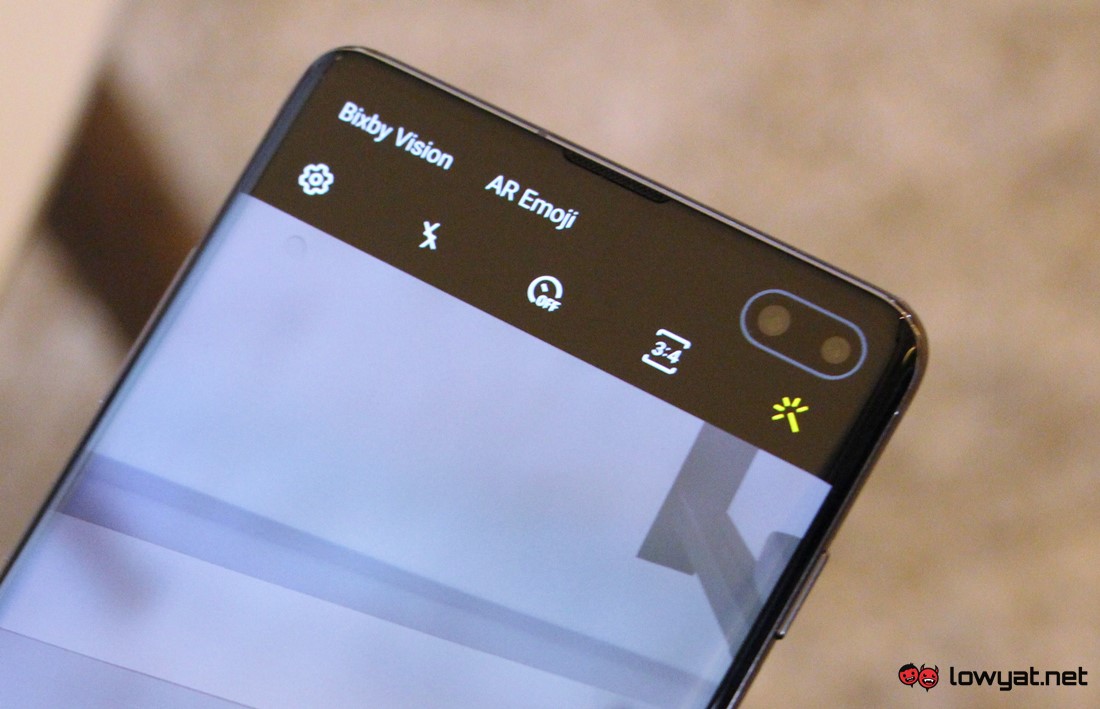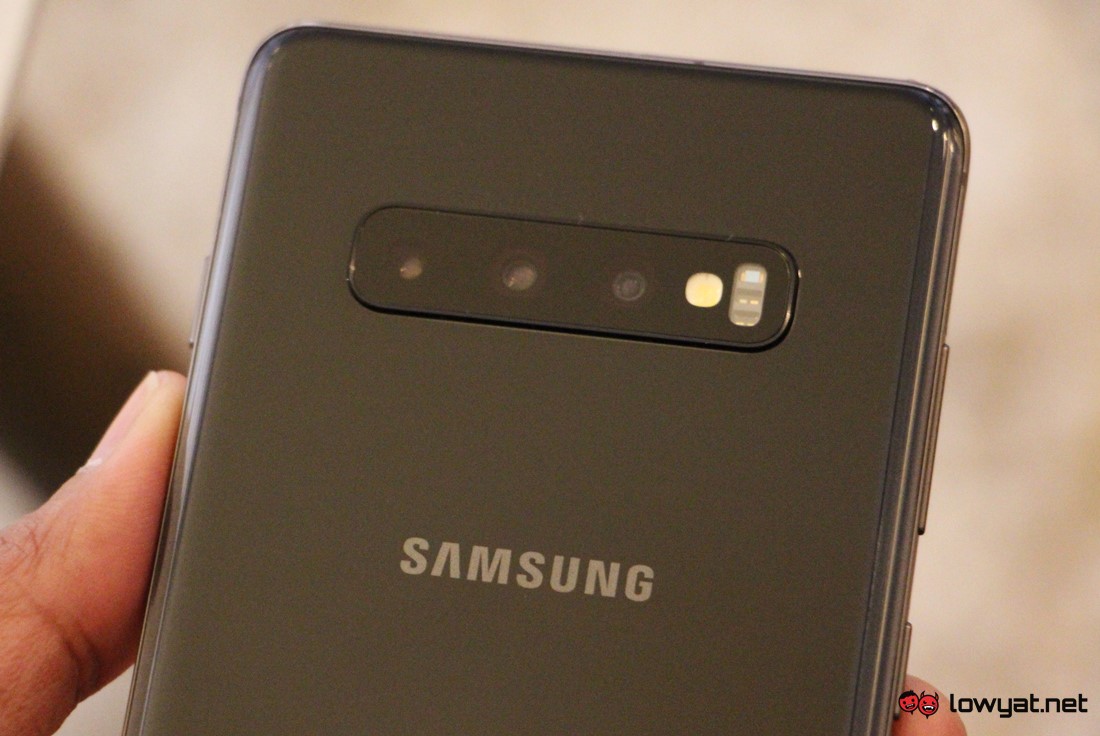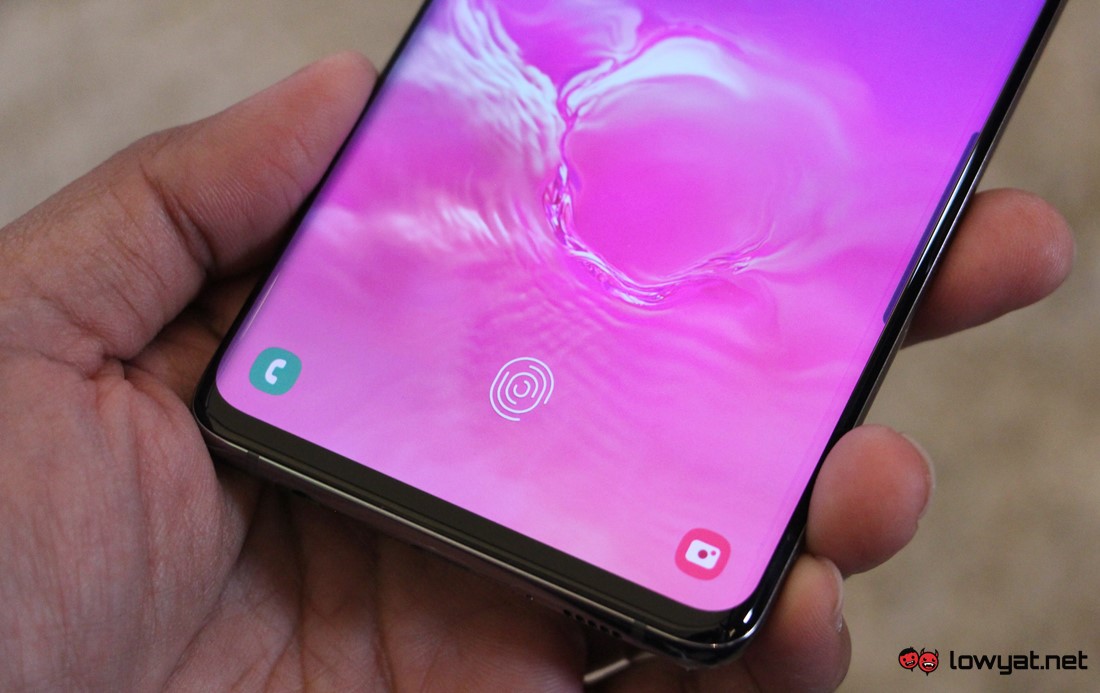In terms of design language and body outline, the Galaxy S10 Plus might look no different from its predecessor, the Galaxy S9 Plus. There are still the curved edges and glass on both sides of the phone together with a metal frame which in a way helped identify the phone as part of the Galaxy S family.
However, once I held the phone in my hand, it felt much sleeker and more importantly: lighter than its predecessor despite having a much bigger battery capacity at 4100mAh. Upon checking the specs sheet, it is indeed true: the new model weights 175gram as compared to Galaxy S9 Plus which is said to be 189grams although the ceramic version of Galaxy S10 Plus is much hefty though at 198grams. One of the most noticeable traits of Galaxy S10+ is its Infinity-O display which houses a pair of cameras within the phone’s Dynamic AMOLED display. These cameras are inclusive of a 10MP dual-pixel autofocus camera with f/1.9 lens and another 8MP fixed focus camera with f/2.2 90-degrees lens that acts as an RGB depth sensor.
It is too early for me to say whether I can live with two punch hole cameras on a phone screen but sure enough, it is indeed harder to ignore the dual front camera setup on Galaxy S10 Plus. Meanwhile, the outline of the front camera module on the phone would be animated whenever it is activated which might seem rather gimmicky but still quite cool in my book. Also new and highly noticeable on Galaxy S10 Plus is the triple camera module on its back. The first two cameras are rather similar to Galaxy S9 Plus in terms of specs which include a wide-angle 12MP dual pixel camera with variable f/1.5 – f/2.4 lens and a telephoto 12MP camera with f/2.4 lens.
The newly added third camera is an ultra-wide shooter with a 16MP sensor, f/2.2 lens, and has 123-degrees field of view which made Galaxy S10 Plus more versatile than its predecessor. My time with the Galaxy S10+ is rather too short to provide any proper feedback for these cameras though but I do notice that the time that the rear camera took to move between the three zoom modes was quite swift and seamless. Another new feature that I managed to check during my super brief time with Galaxy S10 Plus is the in-display ultrasonic fingerprint scanner which actually came from Qualcomm but has been fortified with Samsung Knox security solution. Unlike some of the older in-display fingerprint scanner that existed in last year’s devices, the one in Galaxy S10 Plus is actually quite solid as it has no problem scanning my fingerprint and also as fast as a physical scanner.
Surely, it is quite pre-emptive to judge the phone after experiencing it for less than an hour but in that short period of time, it is clear enough to me that Samsung has retained the same premium build quality and design that one might expect from the flagship-level device for the Galaxy S10 Plus. I love the fact that it is thinner and lighter than its predecessor which helps highlight its sleekness and premium feel but whether the phone’s actual user experience and performance can match its exterior, we shall find out soon enough once the opportunity arises.



